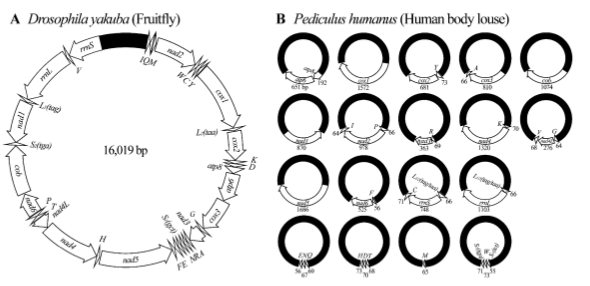Blood holograph in the human body louse?
An interesting article was published recently, related to mitochondria and blood in humans:
Renfu Shao, Ewen F. Kirkness and Stephen C. Barker. “The single mitochondrial chromosome typical of animals has evolved into 18 minichromosomes in the human body louse, Pediculus humanus.” Genome Resaerch. published online March 31, 2009. doi: 10.1101/gr.08318
The presence of such chromosomal diversity, particularly with respect to mitochondria, in such an ideally-simple organism is certainly worth all the more note given that said organism primarily nurtures itself on human blood. The authors report on a specialized technique for genomic compilation, different than standard Polymerase Chain Reaction (PCR) and Rolling Circle Amplification (RCA), so observation is duly made for the differentiation. [caption id=”attachment_42” align=”alignright” width=”500” caption=”The mt genome of P. humanus, however, consists of 18 minicircular chromosomes.”] [/caption] Casually, it would seem that the louse sanguine digestion of ‘the human code’ led to a refraction of its own genetic structure. The ‘facets’ created may reveal nuances about the most essential system-generating elements of our own genetic structure. The non-coding region of each of the 18 louse chromosomes is quite large, comparatively, and may windfall an opportunity to see the role of resonance in the stabilization of coding.
[/caption] Casually, it would seem that the louse sanguine digestion of ‘the human code’ led to a refraction of its own genetic structure. The ‘facets’ created may reveal nuances about the most essential system-generating elements of our own genetic structure. The non-coding region of each of the 18 louse chromosomes is quite large, comparatively, and may windfall an opportunity to see the role of resonance in the stabilization of coding.